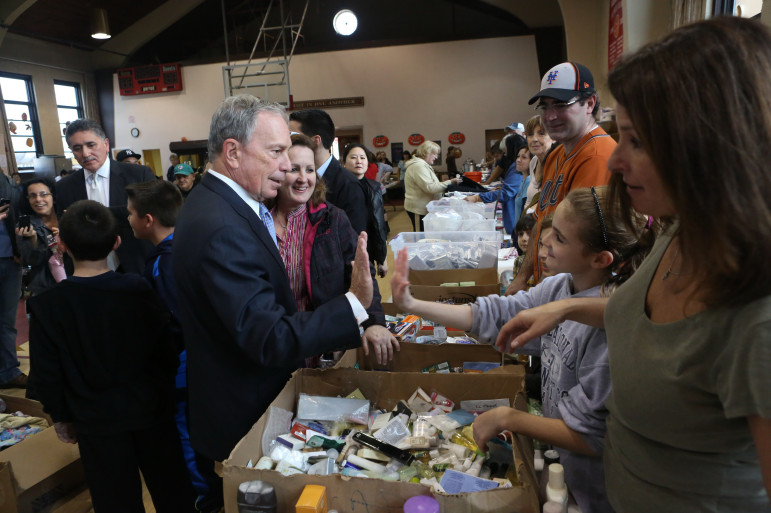
Spencer T Tucker for the Office of the Mayor
Mayor Bloomberg visits a food distribution center in Howard Beach in 2012 after superstorm Sandy. Food stamp usage in the city soared during the first 11 years of his tenure, then began a decline last year that has continued.
When Bill de Blasio became mayor, some of his critics expected a deluge of dependency. How surprising it is, then, that the number of people enrolled in SNAP (or Food Stamps)—which more than doubled during the Bloomberg mayoralty—has fallen every month of the de Blasio administration.
The change is not large: The number of people receiving SNAP benefits in September was 4.5 percent lower than it was in January. But it continues a trend that took hold during 2013, the final Bloomberg year. After hitting a modern-day high in December 2012 at 1,906,610, the number of SNAP recipients began a steady descent.
Why the drop? Optimists might credit it to an improving economy. After all, the city’s economy did add 87,000 jobs from October 2013 to last month.
But the New York Coalition Against Hunger sees a darker explanation: That two waves of devastating federal cuts have so reduced the value of SNAP benefits that families aren’t bother to seek them anymore. In 2010 and again in 2014, the feds took a meat cleaver to SNAP, trimming roughly $14 billion from the program. Gov. Cuomo took action to shield New Yorkers from some of the cuts, but there was no escaping others.
As a result, the Coalition reports today in its annual assessment of hunger in the city:
In New York City, the average household SNAP benefit was cut by $19 per month, equaling a $228 reduction in groceries per year. The amount of SNAP benefits per meal in New York City was reduced from the paltry level of $1.70 per meal in August, 2013 to an even smaller $1.60 per meal in August, 2014. Partially because the benefits were less adequate, few New Yorkers applied or re-applied for SNAP; the rolls declined by 125,487 people in the city during that year. As a result of both the reduction in average benefits amount and the drop in the overall caseload, low-income New York City residents will receive an estimated $426 million less in federal SNAP funding in 2014 than in 2013.









One thought on “Why is Food-Stamp Usage Dropping in NYC? Some Blame Stingy Feds”
This reasoning sounds like a real stretch. Because people are now getting 10 cents less per meal they aren’t bothering to get food stamps, even though the amount they are eligible for is still $1.60 a meal. Where’s the data to back up this absurd assertion?